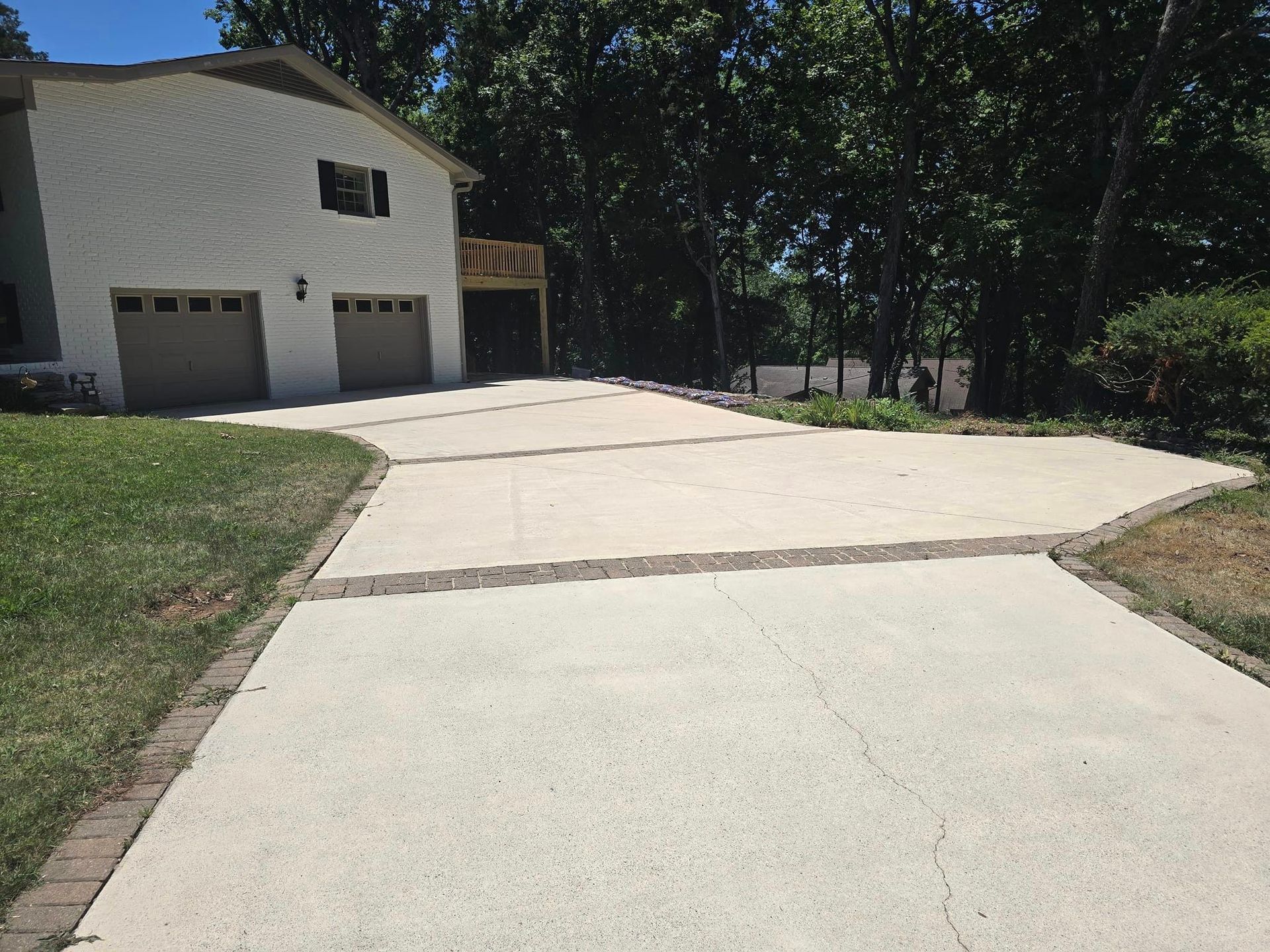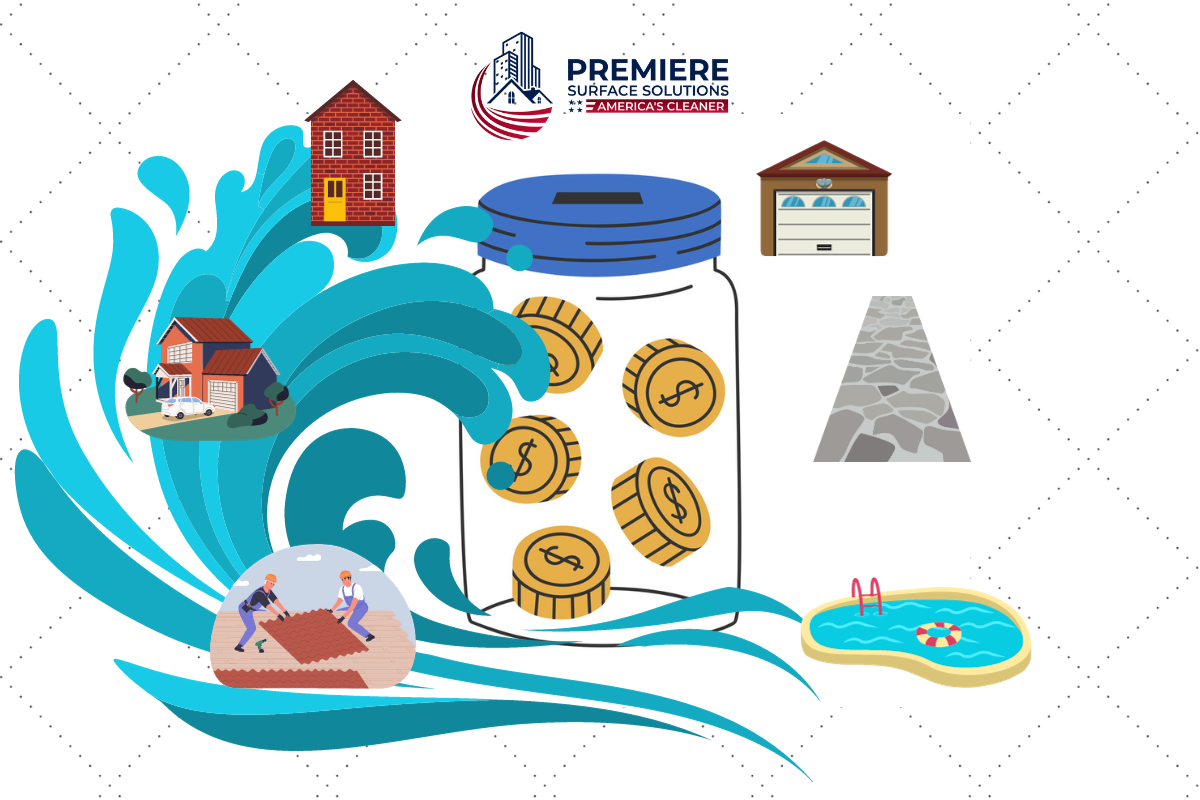Battling the Winter Grime: How Building Exteriors Suffer in the Cold Months
Fewer pressure cleanings can leave your home or business building damaged and exposed
As winter blankets our neighborhoods with its chilly embrace, our homes and businesses become front-line warriors against the elements. The once vibrant exterior colors turn into a canvas for winter’s harsh artistry. But why does this happen, and what can we do to protect our valuable investments?
Let’s explore the cold truths behind winter stains and dirt on home exteriors.
The Science of Stains: Winter's Assault on Home Exteriors
When the temperature drops, a new battle against dirt and stains begins. Here's a detailed look at the science behind the winter woes that plague exteriors.
Moisture Mayhem
- Snow & Ice Accumulation: Snow and ice can stick to siding, slowly melting and refreezing, which can lead to water seeping into tiny cracks or crevices and potentially causing mold or mildew.
- Freeze-Thaw Cycles: These cycles can cause expansion and contraction in exterior materials, leading to cracks where dirt and moisture can accumulate.
Salt and Deicers: The Necessary Evils
- Chemical Residues: Salts and chemical deicers used on roads and walkways can splash onto the sides of homes, leaving a residue that can be tough to clean and can damage protective finishes.
- Corrosive Effects: These substances are also corrosive over time, potentially harming metal accents, such as light fixtures and railings, and staining concrete driveways.
Gutter Glitches
- Overflowing Gutters: Clogged with leaves and debris, gutters may overflow, causing dirty water to streak the sides of the house.
- Ice Dams: These can form at the roof's edge, preventing melting snow from draining. Water can then back up under shingles and seep into exterior walls.
Dirt and Dust: The Winter Layers
Even as life seems to slow down in the cold months, the accumulation of dirt and dust on your homes or business exterior doesn't take a break.
Wintry Winds
- Dust and Debris: Strong winter winds carry dust, dirt, and debris, which can adhere to the building's surfaces, especially when they are wet.
- Barren Trees: Without leaves to catch them, more airborne particles can directly hit your home, leaving a film of grime.
Reduced Cleanings
- Infrequent Washes: Cold weather often leads to less frequent exterior pressure cleaning, allowing dirt to settle and stain.
- Hardened Grime: The longer dirt sits, especially if it gets wet and then dries, the harder it can be to remove.
Biological Blemishes: Mold and Mildew's Winter Wonderland
Mold and mildew thrive in damp, cool conditions, making winter a perfect season for these uninvited guests.
Prolonged Dampness
- Wet Conditions: Extended periods of wet weather without adequate sunlight lead to growths on siding, especially on the north side of structures where sunlight is limited.
Poor Ventilation
- Trapped Moisture: Buildings are generally sealed tighter in winter, trapping moisture which can lead to mildew, especially in poorly ventilated areas.
The Unseen Culprits: Pollution and Soot
Our home, storefront, and office exteriors are also the silent victims of air pollution, which does not take a winter break.
Soot and Smoke
- Fireplaces and Furnaces: The increase in the use of fireplaces and furnaces can lead to an increase in soot and ash in the air, which can settle on home exteriors.
- Pollution Particles: Industrial and vehicle emissions don’t stop during winter, and without the summer’s foliage, more of these particles can directly deposit onto surfaces.
Prevention and Protection: Winterizing Your Home Exterior
Understanding the causes of winter stains and dirt is only half the battle. Here’s how to protect your building from the harsh elements.
Seal and Repair
- Caulk and Sealant: Before the cold sets in, inspect and repair any damaged caulking around windows and doors to prevent moisture intrusion.
- Siding and Roof Inspection: Check for any damages and make necessary repairs to reduce the risk of water damage and stains.
Gutter Guardianship
- Clean Gutters: Ensure gutters are clean and free from leaves and debris to prevent overflow and ice dams.
- Install Gutter Guards: Consider installing gutter guards to help keep debris out.
Proactive Cleaning
- Pressure Washing: A gentle pressure wash in the late fall can remove much of the grime that would otherwise sit all winter.
- Regular Rinse Offs: On warmer days, rinse off salt and chemicals that may have splashed onto the home’s exterior.
Embracing the Clean: Post-Winter Recovery
Once the thaw begins, it’s time to assess and address the winter's impact on your home. store, or office. Most importantly, it's critical to schedule a professional pressure cleaning for your buildings exterior and surrounding surfaces to protect and maintain the life of the structure.
Too often, homeowners and businesses neglect regular Spring and Fall pressure washing, so damage can build up quickly over just a short time.
Get your home or business cleaned now before the freeze impacts your budget.








